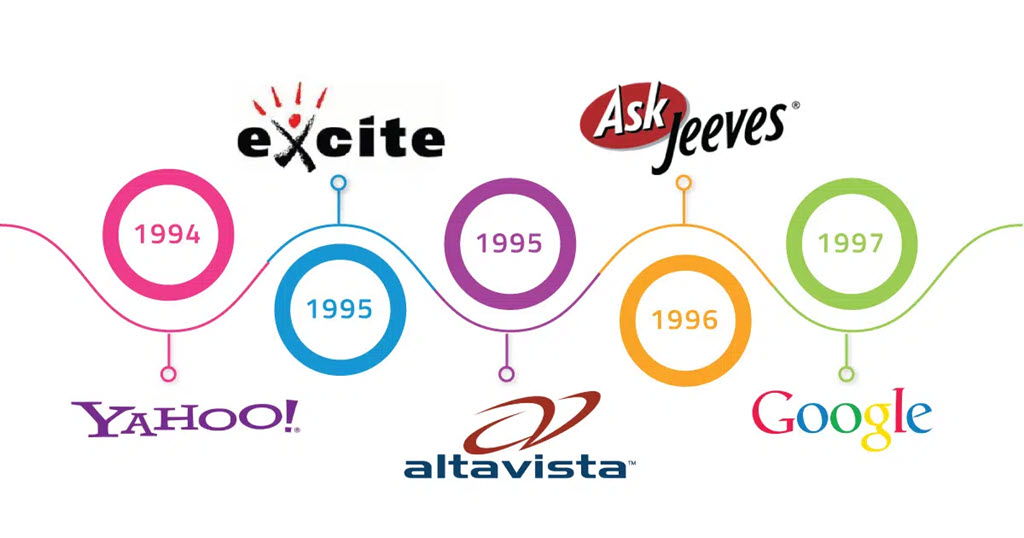
Remember browser home pages? You do? I wouldn’t have guessed, you must be older than you look. All the rest of you children, gather round the fire, let me take you back to a simpler time when we still said “World Wide Web” and you could hear the capital letters.
In the early days of the Internet, your home page was the first thing you saw when you opened Internet Explorer or Netscape Navigator. The browsers came with a default home page, typically a simple page with the browser logo and promotions for their own online services.
Investors were pouring money into dot-com startups in the mid-to-late 1990s, convinced that internet companies would revolutionize the world and generate massive wealth. Business models were unproven and there were no valuation metrics, but the fear of missing out led to a herd mentality among venture capital investors.
Companies like Yahoo!, AltaVista, and Lycos had vague ideas about advertising revenue and e-commerce potential. Each started by creating home pages that users could set as the default in their browsers. They aimed to be the starting point for users’ online experience, offering a directory of websites, search engines, news, email, and other services. The companies competed fiercely to be the default home page in browsers, striking deals with browser makers and even internet service providers (ISPs).

By 1998 Yahoo was the most popular starting point for web users. Yahoo offered a human edited directory of popular websites, plus a search engine that was primitive but a big leap forward at the time.
Competition and the desire for advertising revenue caused the leading companies to transform their home pages into portals, bustling hubs teeming with a plethora of services and features, hoping to cater to every user’s needs. America Online was at the peak of its popularity between 1995-2000, thanks to its aggressive marketing campaign with free trial CDs and friendly (if increasingly cluttered) home page. Alta Vista, Lycos, and Excite also all peaked around 1998, during the heady years when people were discovering the internet for the first time.

Although the portals were very useful, they quickly were overrun with intrusive advertising as the companies burned through cash and became desperate for profits.
I wanted my IT clients to have a better online experience in those early days of learning about the internet, so in 1998 I launched Bruceb Favorites, with the tagline “A simple directory of obvious places.”
Bruceb Favorites has links to the most popular websites, nothing more. It’s designed to load fast, with a minimum of clutter and no advertisements. In the history wing, you can see its earliest incarnation in 1998, or the way it looked through most of the 2000s. Just seeing the names is like using an Internet time machine – Excite, Ask Jeeves, Gateway 2000, so many fond memories.
(Pro tip: Bruceb Favorites still exists and it’s a darned handy page! It’s been lovingly maintained for more than 25 years. Put it on your bookmark bar or put a shortcut on your desktop. The page changes as web sites gain or lose popularity or disappear. There’s a changelog where I track the updates and changes.)

The glory days did not last for Yahoo, AOL, Excite, Alta Vista, Lycos, and so many more. The end of the 90s was a perfect storm of overvaluation, speculation, easy money, and unrealistic expectations. The dot-com crash acted as a reality check for the internet search industry. It weeded out unsustainable business models and forced companies to focus on user needs and profitability.
But the collapse of the portal companies was not entirely caused by poor money management. The real disruptor was Google.
Google came online in 1998 with a laser focus on speed and accuracy in search. Google opted for a minimalist home page with literally nothing more than its logo and a search bar. The page loaded instantly, no small achievement at the height of slow dialup internet connections.
Google’s barebones interface was a sharp contrast with the web portals, which had become cluttered and confusing. The improvement in search quality with Google was immediately obvious and the portal companies could not keep up as Google refined its algorithms and improved its core functionality.
Over the next few years most of the portal companies were acquired or shut down altogether. Survivors bear little resemblance to their early incarnations. Yahoo still exists but has shifted its focus and streamlined its offerings.
The final remnants of the web portal business disappeared in the mobile era. Mobile users often start online sessions directly within apps or by navigating directly to specific websites.
Today home pages and web portals are mostly nostalgic memories. Websites use different strategies to capture users’ attention, including search engine optimization (SEO), content marketing, social media engagement, and mobile app development. We all use Chrome and no one bothers with a home page in their browser. (Technically, you can still choose a home page in Chrome – click on the three dots in the upper right / Settings / scroll down to “On Startup.” It doesn’t work the way old-timers expect though – you’ll see the page you choose when you open Chrome the first time but not on new tabs or if Chrome is already running.)
Don’t overlook Bruceb Favorites, though, even if you’re young and this is ancient history. Sometimes it helps to have a few hundred obvious places just a click away.
